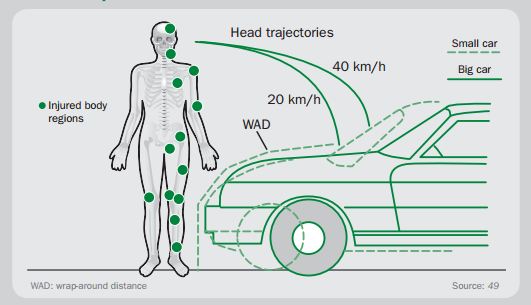The Road Accident Fund (RAF) was established to compensate victims of road accidents in South Africa, including pedestrians and their families. An alarming percentage of people who are injured or die on South African roads are pedestrians, with Arrive Alive putting this figure at 35 to 40% of all road accident victims.
“This high percentage is attributed to a number of factors, including drunk driving and poor pedestrian infrastructure,” says Kirstie Haslam, partner at DSC Attorneys.
Haslam says that it is worth mentioning that if you’re injured in a road accident and the identities of the driver and vehicle owner are unknown, you can still seek compensation from the RAF by filing a “hit and run” claim.
In a “hit and run” road accident, which Haslam says, are more common than one thinks, the driver at fault leaves the scene of the accident without stopping or providing their details.
Claiming from the RAF
She says that pedestrians injured in road accidents can claim from the RAF for:
- past and future medical expenses
- past and future loss of income due to injury
- general damages for pain and suffering or disfigurement.
Haslam says that since August 2008, general damages are paid out only in the event of serious injury. In the event of a pedestrian being killed in a road accident, the family may claim for loss of support and funeral costs.
Criteria for regarding an injury as serious
Haslam explains that the Road Accident Fund considers an injury “serious” if it qualifies as such with reference to the guidelines provided in the American Medical Association’s Guides to the Evaluation of Permanent Impairment, Sixth Edition. These guidelines provide a vast set of criteria for determining an injured person’s so-called “Whole Person Impairment” (WPI).
The WPI is expressed as a percentage. “The Minister of Transport set the threshold percentage at 30%, meaning that the accident victim must be assessed as being 30% Whole Person Impaired in order to qualify for an award of general damages,” she says. “Such an assessment can only be made by an appropriate medical specialist (who has the requisite qualification from the AMA), after the victim has reached maximum medical recovery meaning that the injuries have stabilised and have not notably improved or deteriorated for a period of several months prior to the assessment.”
She says that examples of injuries that may meet the 30% threshold are amputations, permanent brain damage and paraplegia.
“If an injury isn’t rated as 30% Whole Person Impairment in terms of the AMA guidelines, the medical practitioner may apply a “narrative test” to determine whether the claimant may still be entitled to compensation for general damages,” she adds.
In this case, Haslam says that an injury can be classified as serious only if it has resulted in:
- long-term impairment or the loss of a body function
- permanent, severe disfigurement
- a serious long-term mental or behavioural disturbance or disorder
- the loss of an unborn child.
“Common road accident injuries that have by regulation been classified as not being serious (unless there are complications) include whiplash, sprains, torn ligaments, the loss of fingers or toes and superficial wounds,” she explains.
Examples of RAF payouts for pedestrians
In 2014, a 21-year-old man was hit by a car, while he was walking alongside the road in Mpumalanga. Haslam says that the accident resulted in major leg injuries including an above-knee amputation and the man was awarded R1,519,880.
Another case saw a mother make claims against the RAF after her child was hit by a car. “The three-year-old sustained brain injuries and a leg fracture for which she was hospitalised for a month,” says Haslam. “Her mother was awarded R2,039,259 from the RAF for medical expenses, general damages and loss of income.”
In a RAF pedestrian claim that proceeded to the High Court, a young girl was awarded R5,995,031 after being hit by a taxi. Haslam explains that the girl was walking to school along the pavement when the taxi hit her, causing serious injuries.
RAF claim time limit
RAF claims for pedestrians are subject to the same time limits as other RAF claims.
Even if you have a valid personal injury claim and plenty of evidence to support it, Haslam says that the claim will come to nothing if the time limit for pursuing it is exceeded.
“Also known as prescription periods, these time limits vary depending on the type of claim you have, so it’s wise to get advice from a suitably qualified attorney,” she concludes.
How can our Pedestrians be Safer? We share the most Important Suggestions for Pedestrian Safety https://t.co/NP0loKZJcc #ArriveAlive #PedestrianSafety pic.twitter.com/zh49c2y9iH
— Arrive Alive (@_ArriveAlive) August 23, 2019
